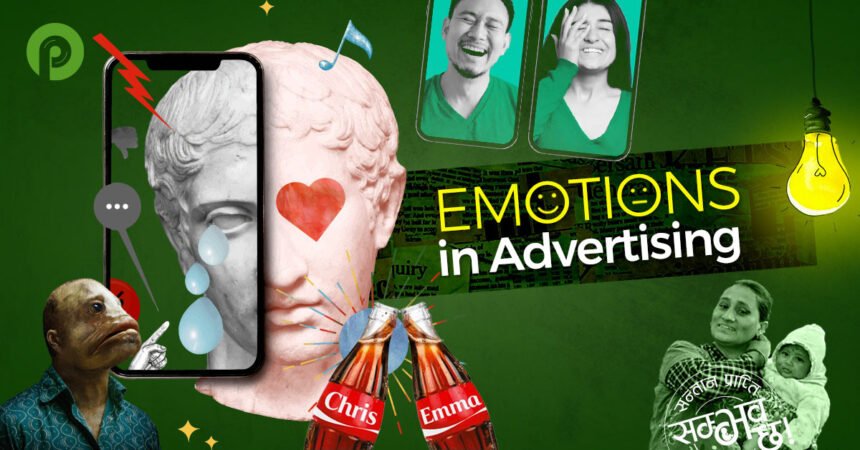Marketing is not just about selling products—it’s about creating experiences that stick. Some advertisements remain in our minds for years, influencing our decisions long after we first see them. This is no accident; marketers use psychology and neuroscience to manipulate memory, making their ads unforgettable. But how does this work? Understanding the science behind memory and marketing can help us recognize these tactics and even use them in our own strategies.
The Psychology of Memory in Marketing

Memory is complex, shaped by emotions, repetition, and associations. Marketers take advantage of these cognitive processes to make their messages more memorable. By tapping into how our brains store and retrieve information, they can ensure that their brand stays in our minds.
First, there’s episodic memory, which recalls specific events. When an ad connects with a personal experience—like a heartwarming holiday commercial—it becomes easier to remember. Then there’s semantic memory, which stores general knowledge. Marketers reinforce their messages by linking their brands to widely known facts or ideas. Finally, procedural memory, which helps us recall actions, is often triggered by jingles and slogans that become second nature to us.
Marketers also exploit the primacy and recency effect—we tend to remember the first and last things we see in an experience. That’s why brands place their logos or main message at the beginning and end of ads. By controlling what we remember, they increase the chances of influencing our buying choices.
The Role of Emotion in Creating Unforgettable Ads

Emotions play a major role in memory formation. Ads that evoke strong feelings—whether joy, nostalgia, or even fear—are more likely to be remembered. Emotional advertising creates a deeper psychological impact and can even lead to long-term brand loyalty.
A classic example is Coca-Cola’s holiday commercials, which focus on warmth, family, and togetherness. The emotions tied to these moments make the brand feel comforting and familiar. Similarly, Nike’s “Just Do It” campaign evokes inspiration and determination, linking the brand with personal achievement.
Fear and surprise are also powerful emotional triggers. Some of the most effective public awareness campaigns—such as anti-smoking ads—use shocking images and messages to leave a lasting imprint. By stimulating strong emotional reactions, these ads become difficult to forget.
Repetition and Familiarity: How Ads Get Stuck in Your Head
Repetition is one of the oldest and most effective advertising techniques. Seeing or hearing the same message multiple times strengthens memory recall, making it easier to remember a product when making a purchasing decision.
Consider jingles like McDonald’s “I’m Lovin’ It” or Kit-Kat’s “Give Me a Break.” These catchy tunes become ingrained in our memories because we hear them repeatedly. The same applies to slogans like “Have It Your Way” from Burger King, which reinforces the brand’s promise of customization.
Repetition also creates the mere exposure effect—a psychological phenomenon where people develop a preference for things simply because they are familiar. That’s why brands ensure their logos, colors, and taglines appear consistently across different media. The more we see them, the more we trust and remember them.
Sensory Marketing: Using Sights, Sounds, and Smells

Memory is not just visual or verbal—it engages all the senses. Smart brands use sensory marketing to trigger specific memories and emotions, making their ads even more powerful.
Visual cues like brand colors (think of Coca-Cola’s red or Tiffany & Co.’s blue) help create instant recognition. Sound effects and jingles reinforce brand recall, while scent marketing plays a hidden yet effective role. For example, many retail stores use signature scents to create positive shopping experiences that linger in customers’ minds.
The combination of multiple senses enhances memory retention. Studies show that when information is paired with sensory experiences—like hearing a brand name in a jingle while seeing its logo—it is remembered better than if presented in just one format.
Storytelling: The Secret Behind Memorable Campaigns
Humans are wired to remember stories better than facts. That’s why some of the most effective marketing campaigns use storytelling to build emotional connections and make their messages more memorable.
Take Apple’s “Think Different” campaign—instead of listing product specs, it told a compelling story about innovation and creativity. Similarly, Google’s “Parisian Love” ad used a simple search engine narrative to tell a heartfelt story, making it both relatable and unforgettable.
Stories create neural coupling, where the listener’s brain activity mirrors that of the storyteller. This deep engagement makes the message more personal and easier to recall. By embedding their brand into a story, companies ensure that their message sticks with audiences for years.
The Power of Surprise and Novelty in Marketing
Our brains are naturally drawn to new and unexpected information. That’s why advertisements that break patterns or introduce an unexpected twist are more likely to be remembered.
For instance, Old Spice’s viral commercials used humor and absurdity to stand out from traditional grooming ads. The bizarre yet entertaining approach captured attention and made the brand unforgettable. Similarly, Doritos’ Super Bowl commercials often use unpredictable humor, ensuring they stay in viewers’ minds long after the game ends.
Surprise triggers the dopamine reward system, making the experience more enjoyable and reinforcing memory retention. When something is truly different, our brains prioritize remembering it, giving unique ads an edge over competitors.
How Marketers Use Social Proof to Reinforce Memory
Social influence plays a huge role in memory formation. When people see others engaging with a brand, they are more likely to remember and trust it. Marketers leverage this psychological effect through testimonials, influencer marketing, and viral campaigns.
User-generated content—such as TikTok challenges or Instagram posts—creates an organic way to reinforce brand recall. People remember experiences better when they feel personally involved, and seeing real people interact with a brand strengthens those memories.
Celebrity endorsements also enhance memory by linking a familiar face to a product. When we see our favorite athletes or actors using a brand, the association becomes embedded in our minds, making us more likely to recall it later.
The Ethical Debate: Is Memory Manipulation Fair?
While marketing strategies can be fascinating, they also raise ethical concerns. Should companies have the power to shape our memories and influence our decisions so deeply?
Some argue that manipulating memory can lead to misleading advertising, where brands exaggerate benefits or create false emotional connections. For example, fast-food commercials often show unrealistic portrayals of their products, creating deceptive mental images in consumers’ minds.
On the other hand, ethical marketing practices focus on transparency and authenticity. Brands that use memory techniques responsibly—by providing valuable, truthful, and relevant messages—can create meaningful relationships with consumers rather than simply exploiting their psychology.
Conclusion: Understanding the Science of Memorable Ads
Marketing and memory are deeply connected. From emotional triggers to sensory experiences, brands use a variety of psychological tactics to ensure their messages remain unforgettable. While some of these techniques can be powerful and beneficial, they also come with ethical considerations.
By understanding how marketing manipulates memory, consumers can become more aware of the strategies being used on them. Likewise, businesses can use these insights to create ethical, engaging, and long-lasting brand connections. Whether you’re an advertiser or a consumer, knowing the science behind unforgettable ads can help you navigate the world of marketing with a sharper eye.












